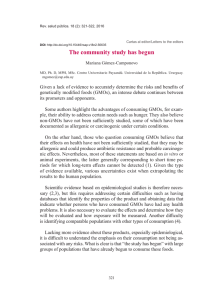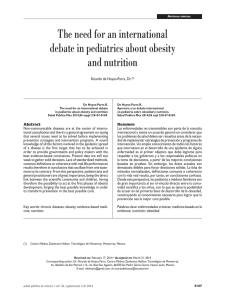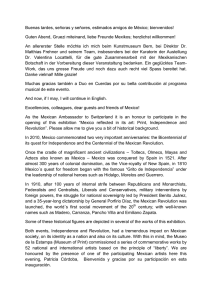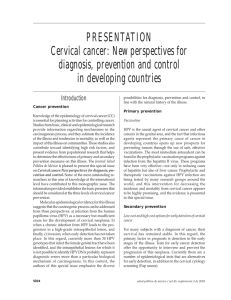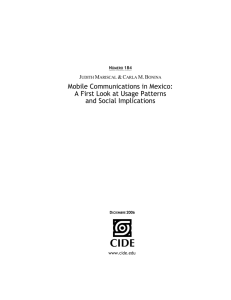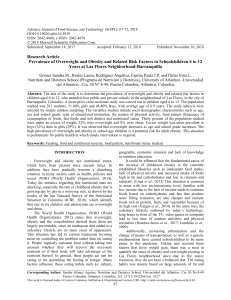Mexico and the USA: The world`s leaders in the obesity epidemic
Anuncio
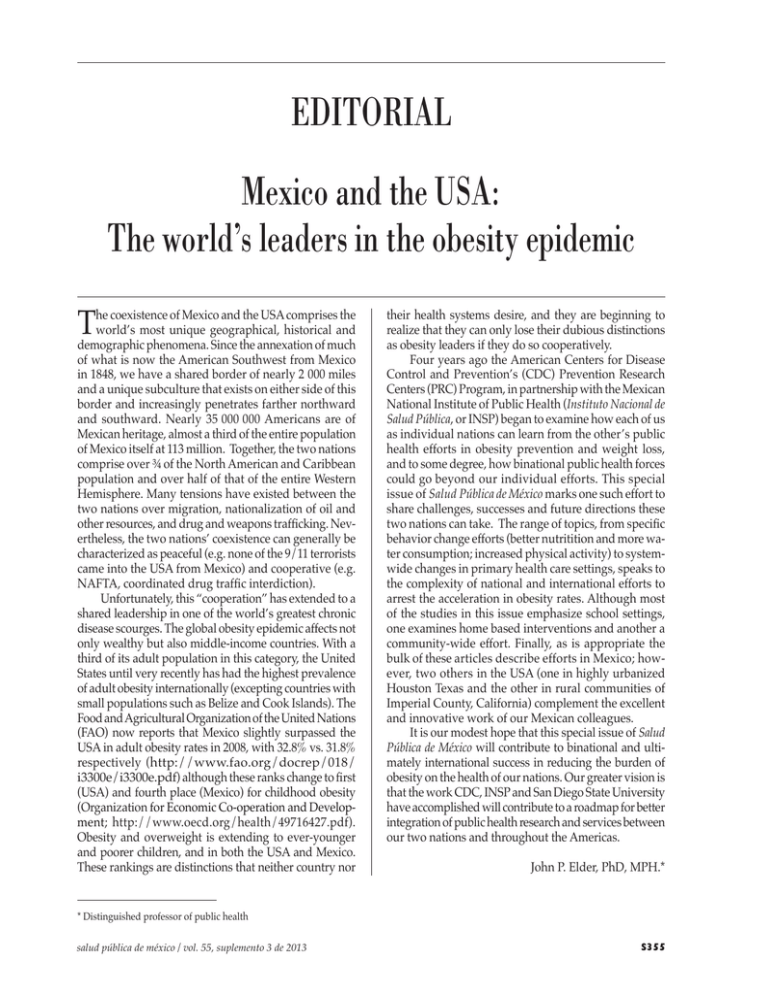
Editorial EDITORIAL Mexico and the USA: The world’s leaders in the obesity epidemic T he coexistence of Mexico and the USA comprises the world’s most unique geographical, historical and demographic phenomena. Since the annexation of much of what is now the American Southwest from Mexico in 1848, we have a shared border of nearly 2 000 miles and a unique subculture that exists on either side of this border and increasingly penetrates farther northward and southward. Nearly 35 000 000 Americans are of Mexican heritage, almost a third of the entire population of Mexico itself at 113 million. Together, the two nations comprise over ¾ of the North American and Caribbean population and over half of that of the entire Western Hemisphere. Many tensions have existed between the two nations over migration, nationalization of oil and other resources, and drug and weapons trafficking. Nevertheless, the two nations’ coexistence can generally be characterized as peaceful (e.g. none of the 9/11 terrorists came into the USA from Mexico) and cooperative (e.g. NAFTA, coordinated drug traffic interdiction). Unfortunately, this “cooperation” has extended to a shared leadership in one of the world’s greatest chronic disease scourges. The global obesity epidemic affects not only wealthy but also middle-income countries. With a third of its adult population in this category, the United States until very recently has had the highest prevalence of adult obesity internationally (excepting countries with small populations such as Belize and Cook Islands). The Food and Agricultural Organization of the United Nations (FAO) now reports that Mexico slightly surpassed the USA in adult obesity rates in 2008, with 32.8% vs. 31.8% respectively (http://www.fao.org/docrep/018/ i3300e/i3300e.pdf) although these ranks change to first (USA) and fourth place (Mexico) for childhood obesity (Organization for Economic Co-operation and Development; http://www.oecd.org/health/49716427.pdf). Obesity and overweight is extending to ever-younger and poorer children, and in both the USA and Mexico. These rankings are distinctions that neither country nor their health systems desire, and they are beginning to realize that they can only lose their dubious distinctions as obesity leaders if they do so cooperatively. Four years ago the American Centers for Disease Control and Prevention’s (CDC) Prevention Research Centers (PRC) Program, in partnership with the Mexican National Institute of Public Health (Instituto Nacional de Salud Pública, or INSP) began to examine how each of us as individual nations can learn from the other’s public health efforts in obesity prevention and weight loss, and to some degree, how binational public health forces could go beyond our individual efforts. This special issue of Salud Pública de México marks one such effort to share challenges, successes and future directions these two nations can take. The range of topics, from specific behavior change efforts (better nutritition and more water consumption; increased physical activity) to systemwide changes in primary health care settings, speaks to the complexity of national and international efforts to arrest the acceleration in obesity rates. Although most of the studies in this issue emphasize school settings, one examines home based interventions and another a community-wide effort. Finally, as is appropriate the bulk of these articles describe efforts in Mexico; however, two others in the USA (one in highly urbanized Houston Texas and the other in rural communities of Imperial County, California) complement the excellent and innovative work of our Mexican colleagues. It is our modest hope that this special issue of Salud Pública de México will contribute to binational and ultimately international success in reducing the burden of obesity on the health of our nations. Our greater vision is that the work CDC, INSP and San Diego State University have accomplished will contribute to a roadmap for better integration of public health research and services between our two nations and throughout the Americas. John P. Elder, PhD, MPH.* * Distinguished professor of public health salud pública de méxico / vol. 55, suplemento 3 de 2013 S355



